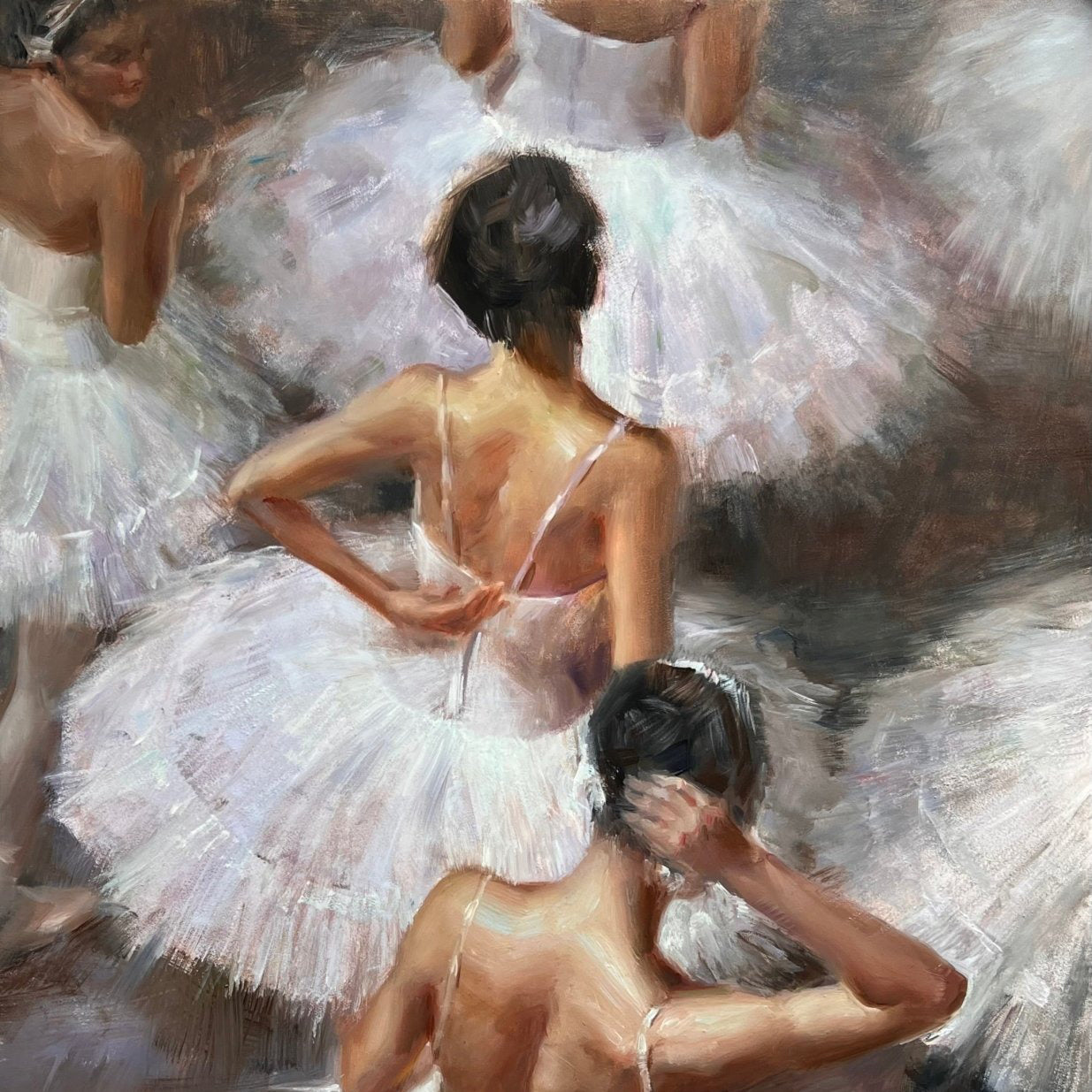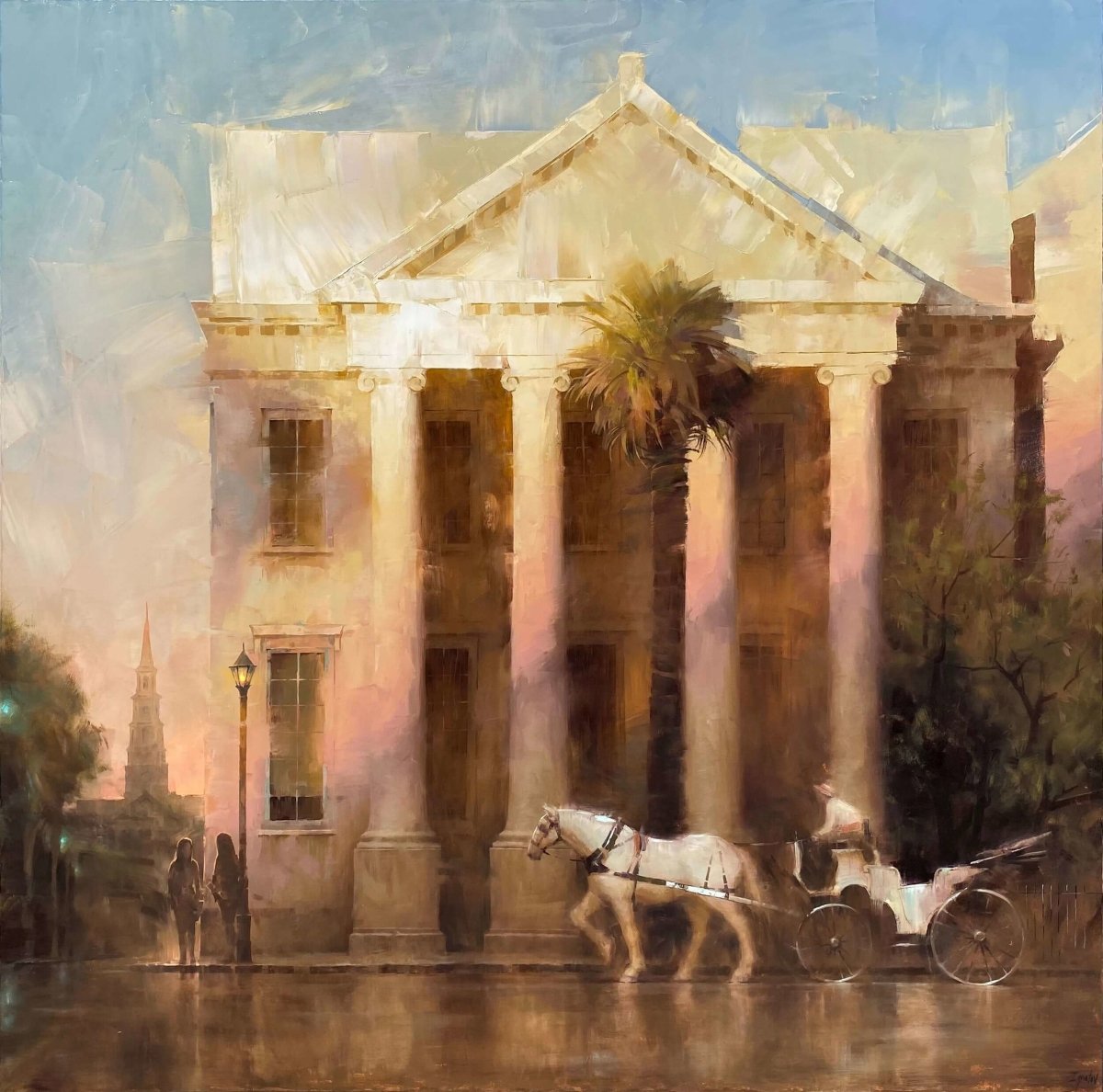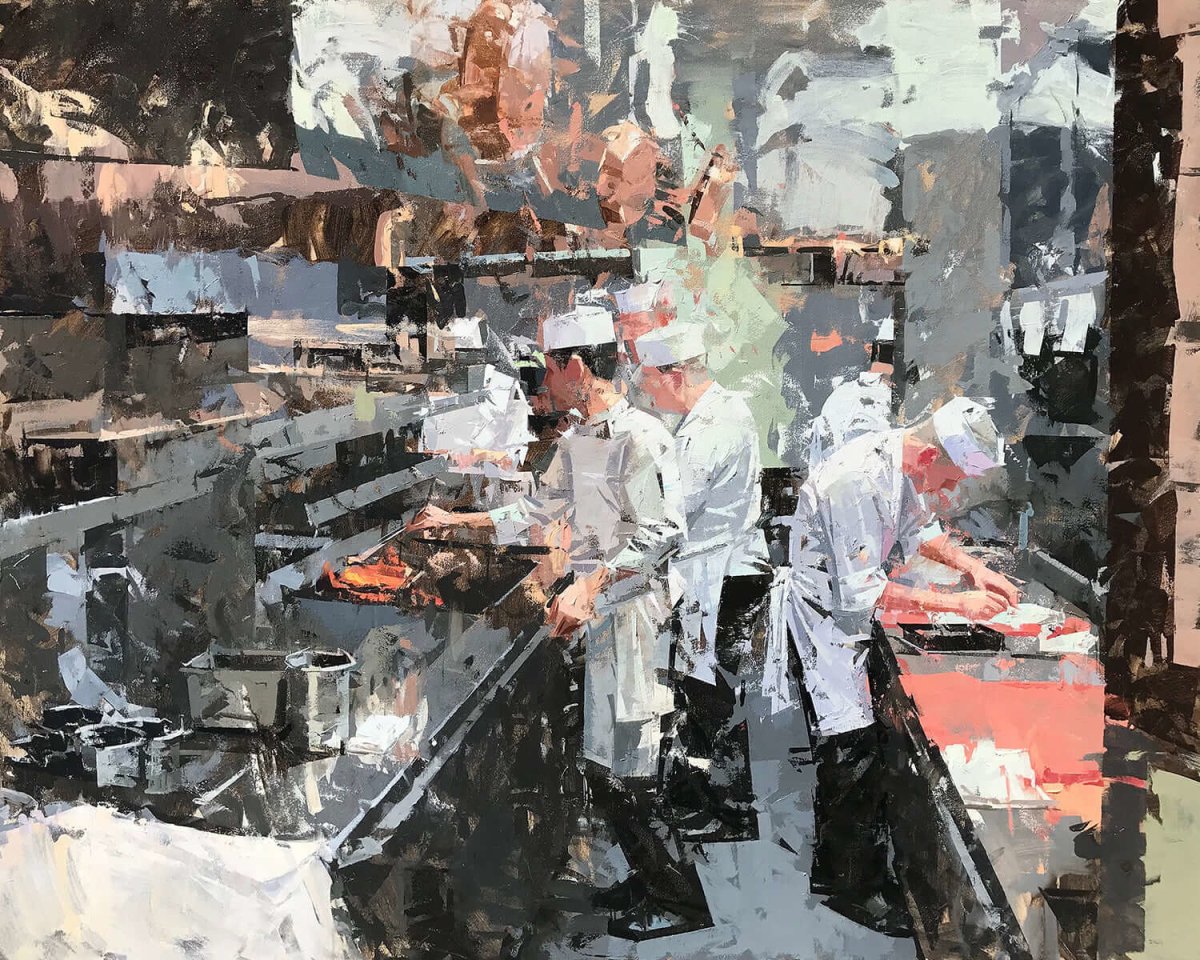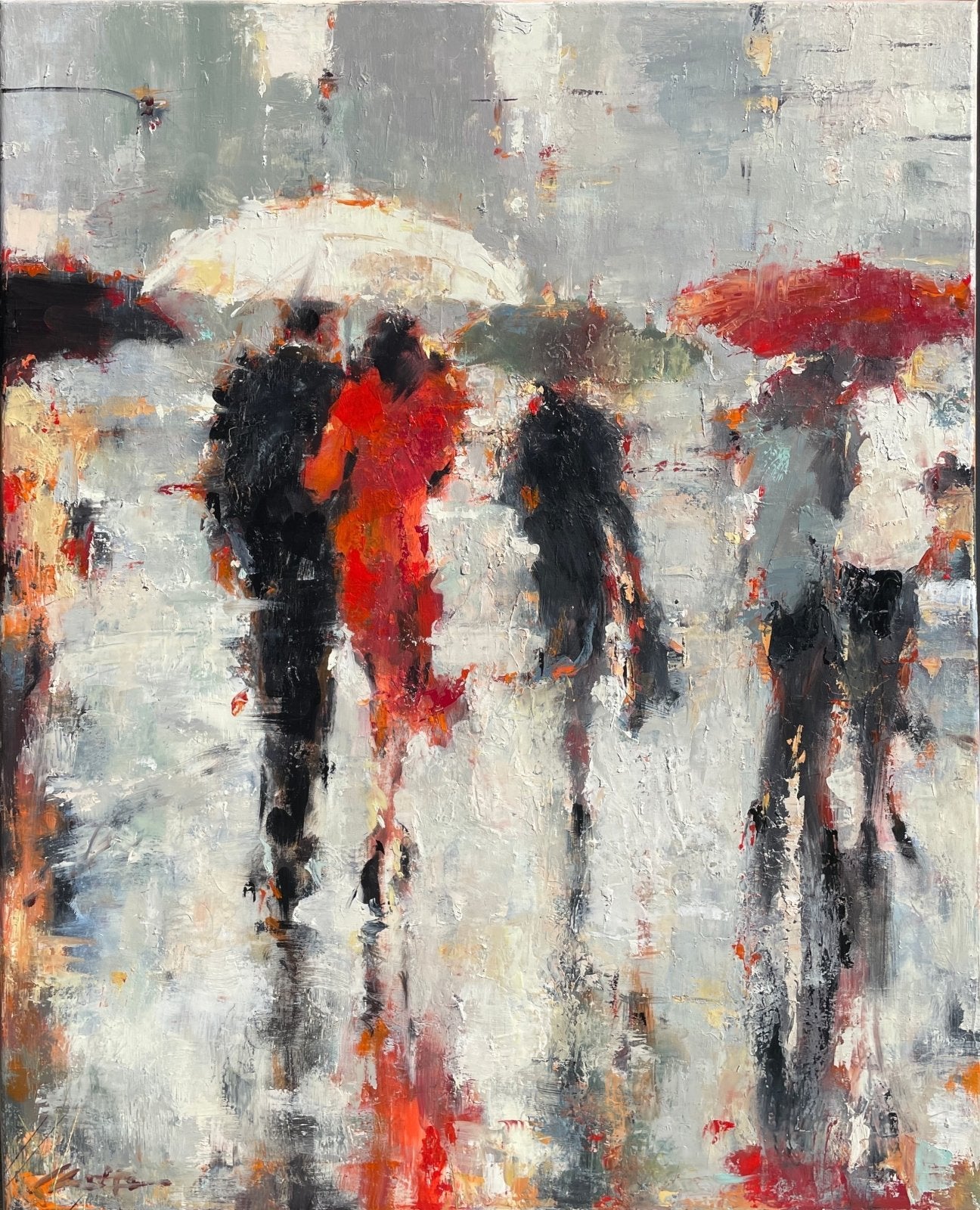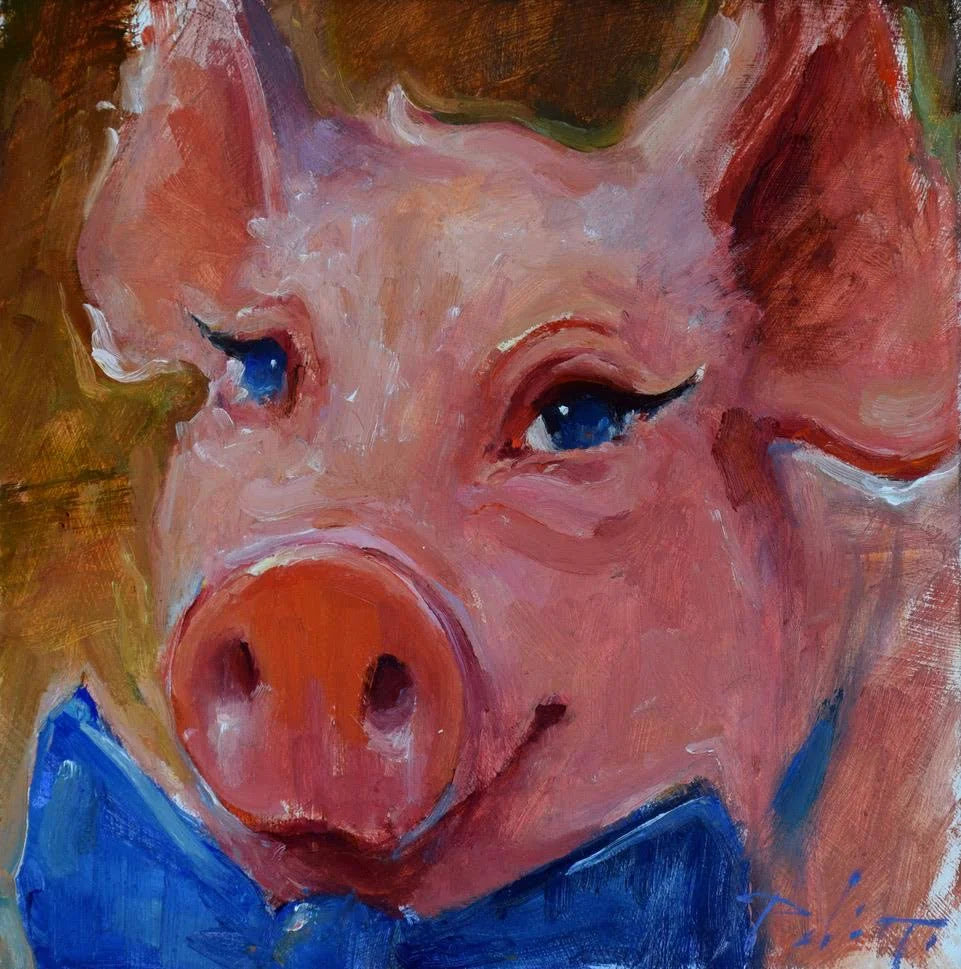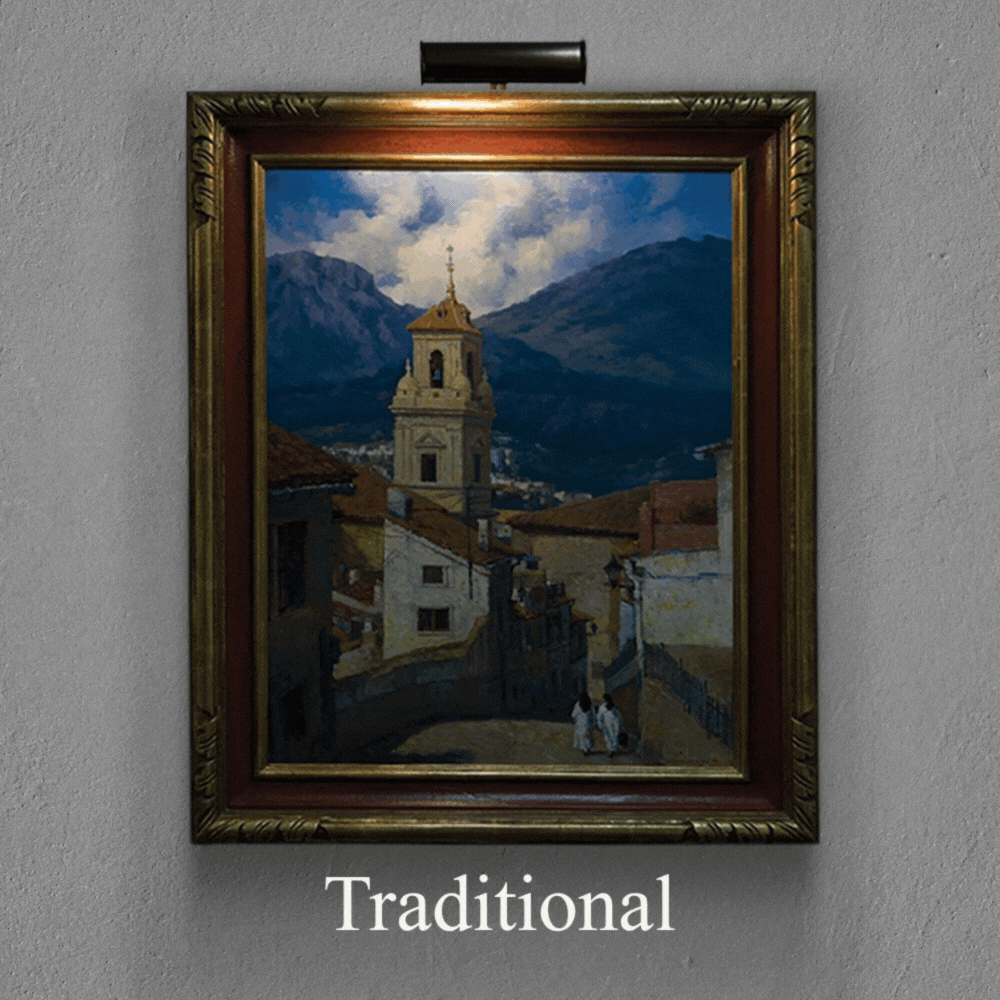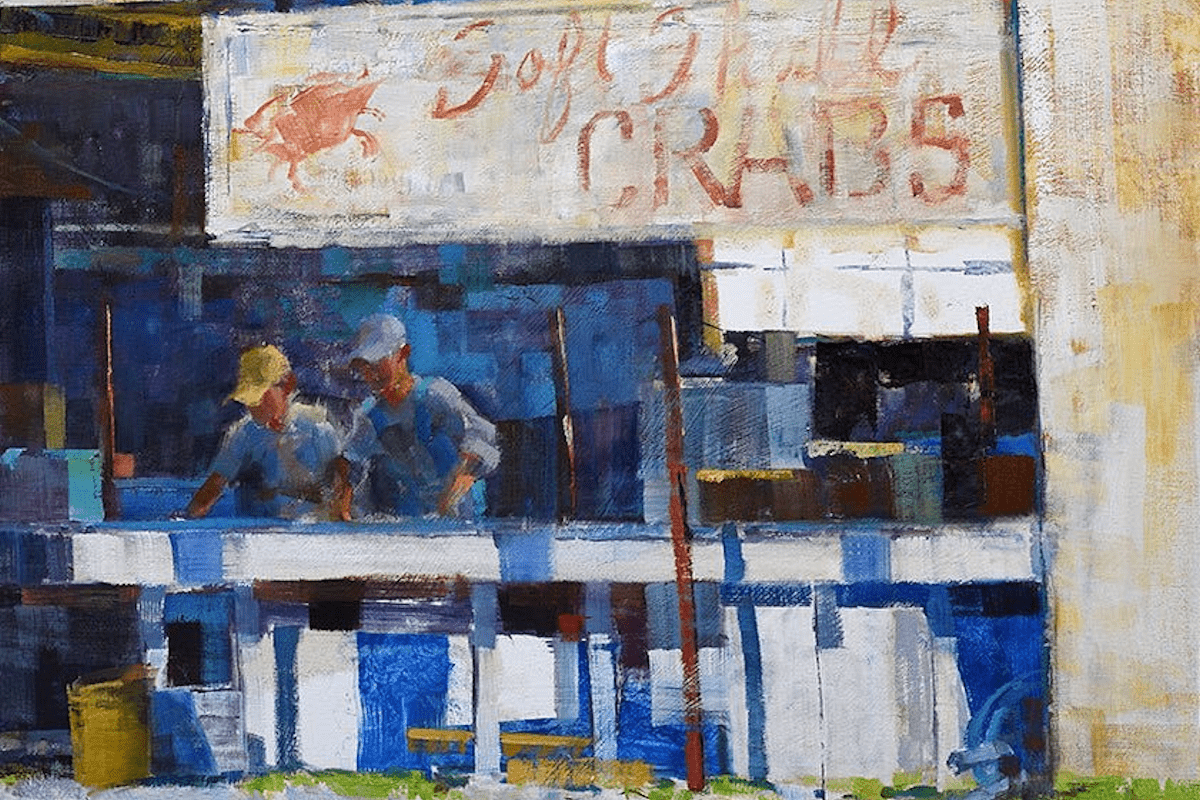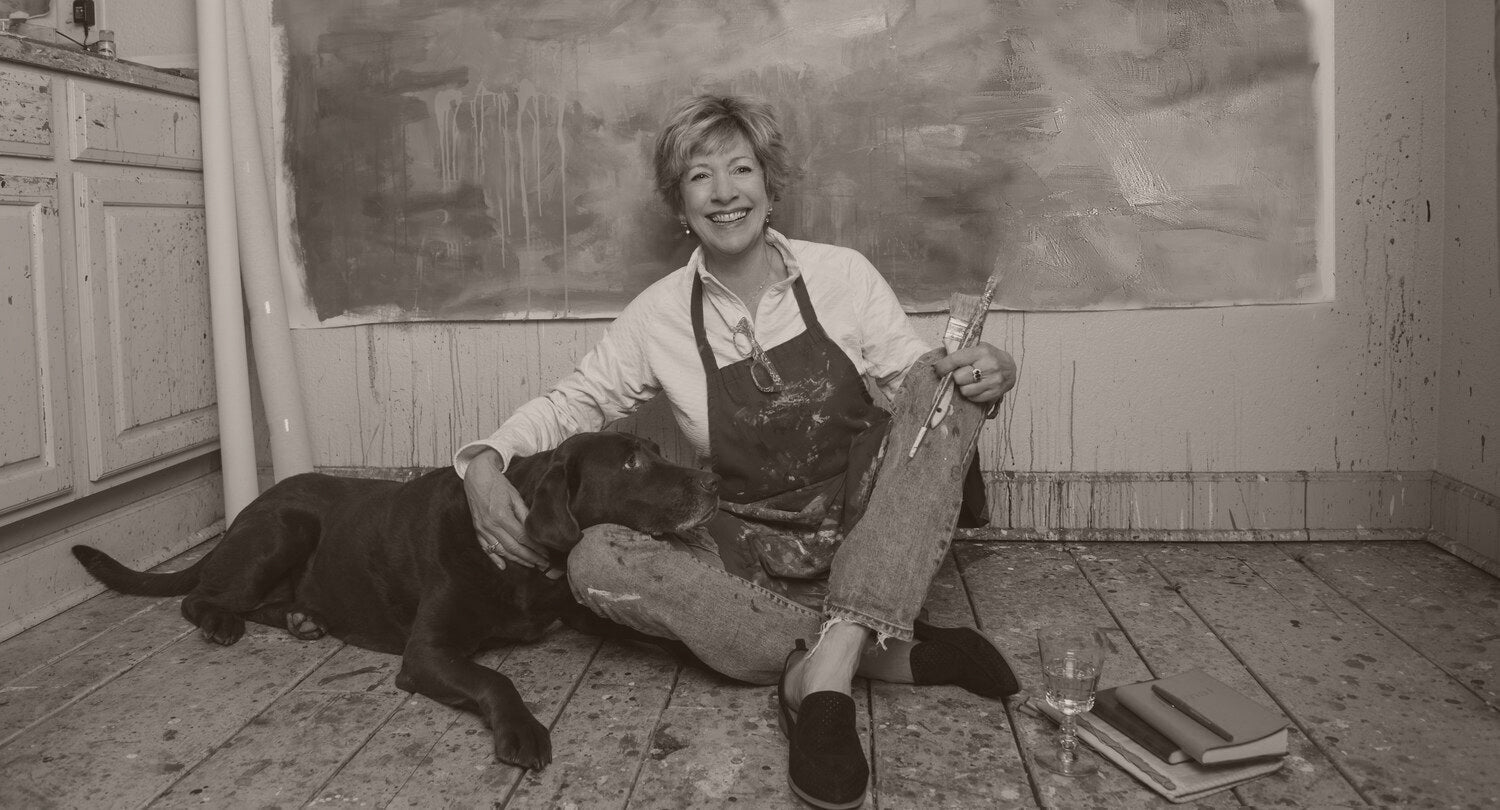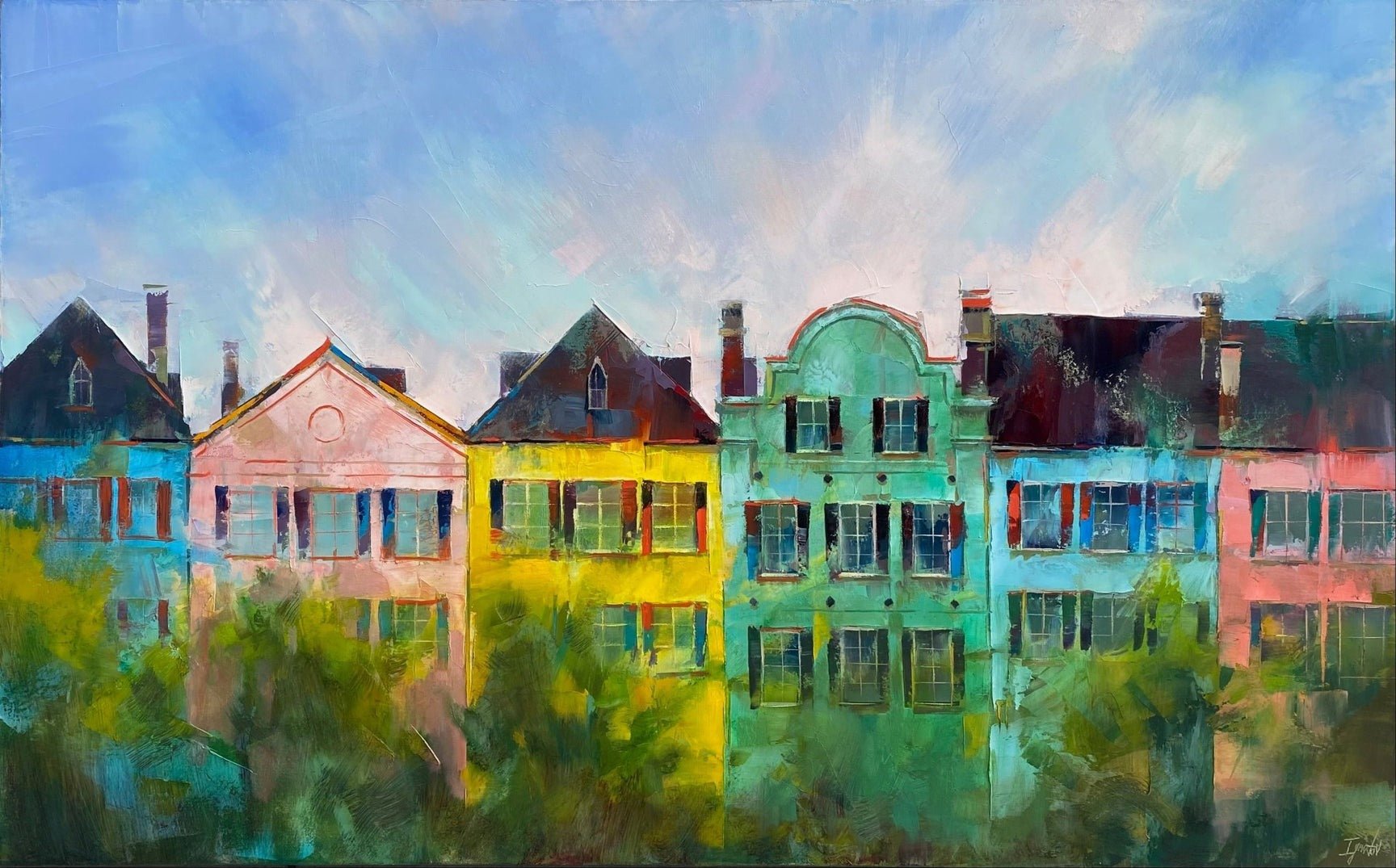Common Art Terms and Their Meanings
Common Art Terms: Introduction
While the world of art is adorned with a tapestry of terms that can enhance our understanding, nothing compares to seeing art up close. It's one thing to know the difference between impressionism and surrealism; it's entirely another to feel the emotions a painting evokes or to get lost in the depths of a sculpture. For those yearning for such an experience, Charleston beckons with its rich artistic heritage. And there's no better place to start than an artwalk through the historic streets, culminating at the renowned LePrince Fine Art Galleries. So, arm yourself with knowledge, but let your senses lead the way in the heart of Charleston.
Furthermore, in the vast world of art, the language used can sometimes be as intricate and layered as the masterpieces themselves. From the Renaissance halls of museums to contemporary art galleries, artistic jargon has evolved, guiding our understanding and appreciation of the works before us. Whether you're an artist, an avid collector, or someone simply looking to deepen your appreciation of art, understanding common art terms is crucial. This article aims to demystify these terms, providing a clear and concise guide to the essential vocabulary of the art world. Dive in, and let's embark on a journey through the rich tapestry of artistic expression.
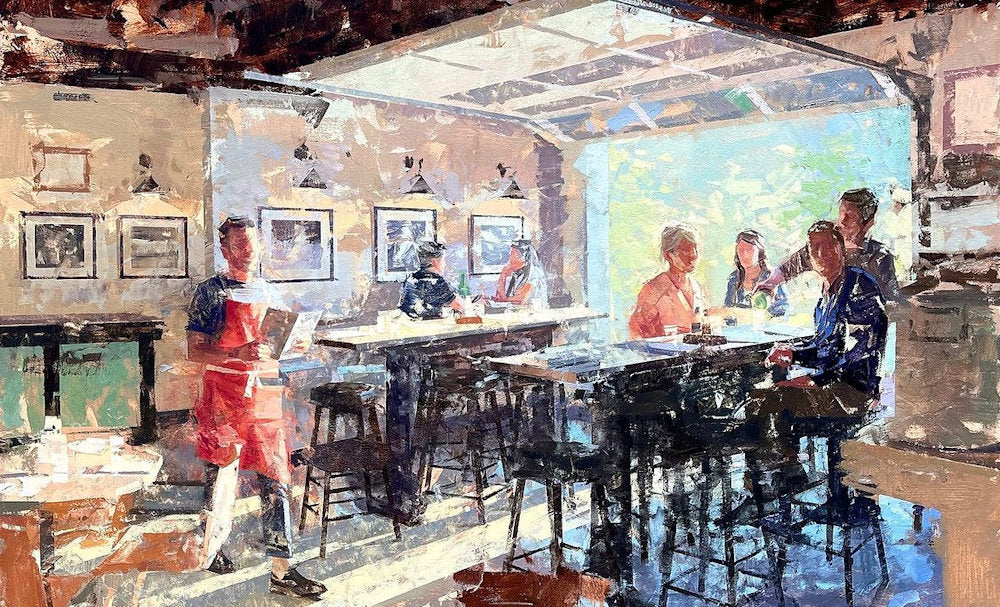
1. Art Term - Impressionist Art
Definition: Impressionism is an art movement that originated in France during the late 19th century. It was a radical departure from traditional art of its time.
Characteristics:
-
Capturing the Moment: Impressionist artists sought to capture the fleeting effects of light and color. They often painting at different times of the day to observe these changes.
-
Visible Brush Strokes: The brushwork in Impressionist paintings is often loose, with visible strokes. These stroked give the painting a sense of movement and spontaneity. This was a stark contrast to the smooth, almost invisible brushwork of earlier academic paintings.
-
Outdoor Scenes: Many Impressionist paintings depict outdoor landscapes, urban scenes, and leisure activities. These artists frequently painted outdoors, a practice known as "plein air" painting. They did this to directly capture the interplay of natural light and color.
-
Everyday Life: Instead of grand historical or religious scenes, Impressionists often focused on everyday life. They would capture candid moments and modernity of the 19th-century life.
Notable Artists and Works:
-
Claude Monet: Widely regarded as the leading figure of Impressionism. His works, such as "Water Lilies" and "Impression, Sunrise" (from which the movement got its name), epitomize the movement's ethos of capturing light and atmosphere.
-
Pierre-Auguste Renoir: Known for his vibrant light and saturated color, often highlighting human figures and scenes of leisure, as seen in "Luncheon of the Boating Party."
-
Camille Pissarro: A pivotal figure in both Impressionism and Post-Impressionism, he's known for diverse subjects, ranging from rural scenes to urban vistas like "Boulevard Montmartre at Night."
Impact and Legacy:
Impressionism was initially met with skepticism and even mockery by traditionalists and the mainstream art community. Over time, however, it paved the way for various modern art movements. Now it is celebrated as one of the foundational movements of modern art. Its emphasis on capturing "impressions" and the essence of a moment continues to influence artists today.
2. Art Term -Contemporary Art
Definition: Contemporary Art refers to the art produced from the latter half of the 20th century to the present day. Unlike previous art movements, contemporary art isn't restricted to a specific style, technique, or ideology. Instead, it is defined by its temporal context and its reflection on modern-day society.
Characteristics:
-
Diverse Media and Techniques: Contemporary artists use a myriad of materials and methods, from traditional painting and sculpture to digital media, performance, and everything in between.
-
Conceptual Focus: While aesthetics remain vital, the concept or idea behind the work often takes precedence in contemporary art. This shift toward the conceptual began with movements like Conceptual Art in the 1960s and 1970s.
-
Social and Political Commentary: Many contemporary artists engage directly with social, political, and cultural issues in their work. They offer critiques or insights into modern society's challenges.
-
Global and Cultural Diversity: Contemporary art is more globally inclusive than ever before, with artists from all over the world contributing to the discourse. This global perspective brings diverse cultural, social, and political viewpoints to the forefront.
Examples and Notable Artists:
-
Yayoi Kusama: Known for her immersive, large-scale environments that often incorporate polka dots, pumpkins, and mirrors, like the "Infinity Mirror Rooms."
-
Ai Weiwei: A multifaceted artist and activist, he addresses themes of human rights, culture, and politics in his works, such as the installation "Sunflower Seeds."
-
Banksy: An anonymous England-based street artist, political activist, and film director. His satirical street art and subversive epigrams combine dark humor with graffiti executed in a distinctive stenciling technique.
Impact and Significance:
Contemporary art plays a crucial role in reflecting and shaping modern culture. It provides a platform for diverse voices, tackles pressing issues, and constantly challenges the boundaries of what art can be. Through museums, galleries, biennials, and public installations, contemporary art reaches a wide audience and often encourages active engagement and discussion.
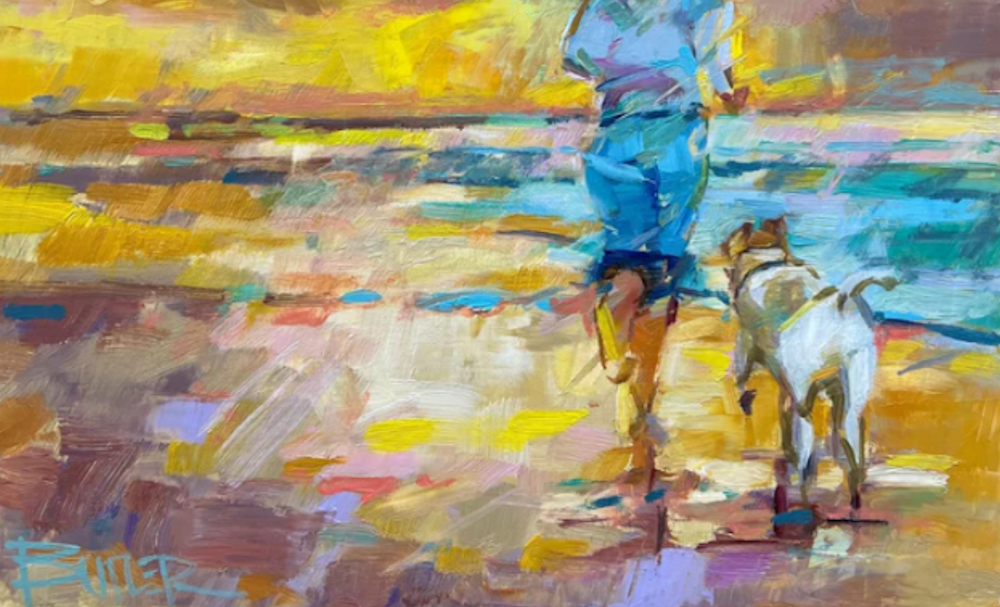
3. Art Term - Abstract Art
Definition: Abstract Art doesn't attempt to represent a precise depiction of visual reality. Instead, it uses shapes, colors, forms, and gestural marks to achieve its intent. Thus, it might be to evoke emotions, represent an idea, or explore pure aesthetic pleasure.
Characteristics:
-
Non-representational Forms: Abstract art often consists of non-representational forms, meaning it doesn't necessarily depict anything specific from the visible world.
-
Emphasis on Visual Elements: The focus often lies on elements like color, shape, line, and form. The relationships and interactions between these elements become the subject of the artwork.
-
Emotional Impact: Given its non-representational nature, abstract art often seeks to evoke emotion or mood rather than tell a specific story.
Notable Artists and Works:
-
Wassily Kandinsky: Often regarded as the pioneer of abstract art. His compositions, like "Composition VIII", delve into the emotional power of color and form.
-
Jackson Pollock: Famous for his "drip paintings," Pollock's works like "No. 5, 1948" exemplify the Abstract Expressionist movement, emphasizing the process of creation and the physical act of painting.
-
Mark Rothko: Known for his large, color-filled canvases, Rothko's works, such as those in the "Rothko Chapel," explore the emotional impact of color and its spatial relationship on canvas.
Influence and Evolution:
Abstract art marked a significant departure from the representational art that dominated prior centuries. It gave artists the freedom to convey ideas beyond the visible world. This opened the door to a multitude of art movements and practices that focus on internal experiences, formal exploration, and conceptual ideas. Today, abstract art remains influential, with contemporary artists building upon and reinterpreting the foundations laid by early abstract artists.
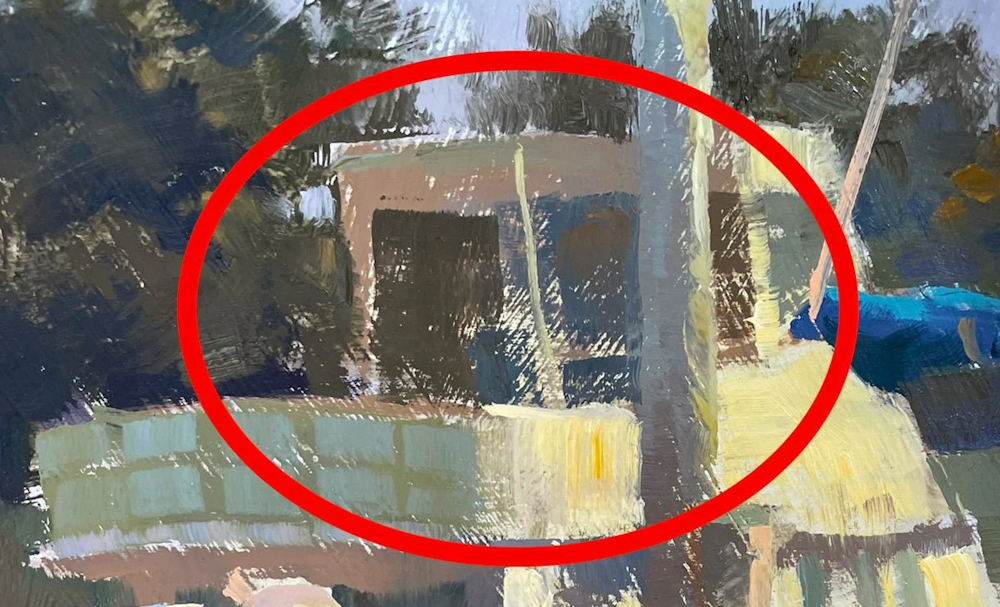
4. Art Term - Mark Making
Definition: Mark-making refers to the various lines, dots, marks, patterns, and textures we create in visual art. It can be conscious or intuitive, and it's a fundamental component in the visual language of art. Essentially, it's the process of applying a tool or medium to a surface, creating a visual trail.
Characteristics:
-
Diverse Tools and Techniques: Mark making isn't limited to a brush on canvas. It can involve a multitude of tools such as pencils, crayons, sticks, sponges, fingers, and many other implements.
-
Expressiveness: The way an artist makes a mark – be it aggressive, gentle, controlled, or loose – can convey a range of emotions and intentions.
-
Foundational to Various Art Forms: Whether it's drawing, painting, printmaking, or even sculpture, mark making is an essential component.
Examples and Types of Marks:
-
Hatching and Cross-Hatching: Using closely spaced parallel lines to convey shade or texture. Cross-hatching involves adding another set of lines going in another direction.
-
Stippling: Using small dots to create depth, shade, or texture.
-
Scumbling: A technique where a layer of thin or broken up color is brushed over another color so that patches of the color beneath show through.
-
Impasto: Thick paint application, creating texture and dimension on the surface.
Significance in Art History and Contemporary Practice:
Mark making has been an integral aspect of human expression throughout history. From the earliest cave paintings, where hands or rudimentary brushes created symbols and depictions of daily life, to modern art, where the action of mark making itself can become the art (as seen in Abstract Expressionism), the significance of the mark has evolved but remained central.
In contemporary practice, artists might explore mark making not just as a technique, but as a concept in itself. For instance, some artists might challenge traditional notions of "valuable" marks by using unconventional tools or methods.
Impact and Legacy:
The exploration of mark making has led to a deeper understanding of the relationship between the artist, the tool, the medium, and the surface. It's a testament to the endless ways humans can express themselves visually. In teaching art, especially in foundational courses, mark making often serves as an essential exercise, allowing students to discover their unique style and approach to their chosen medium.
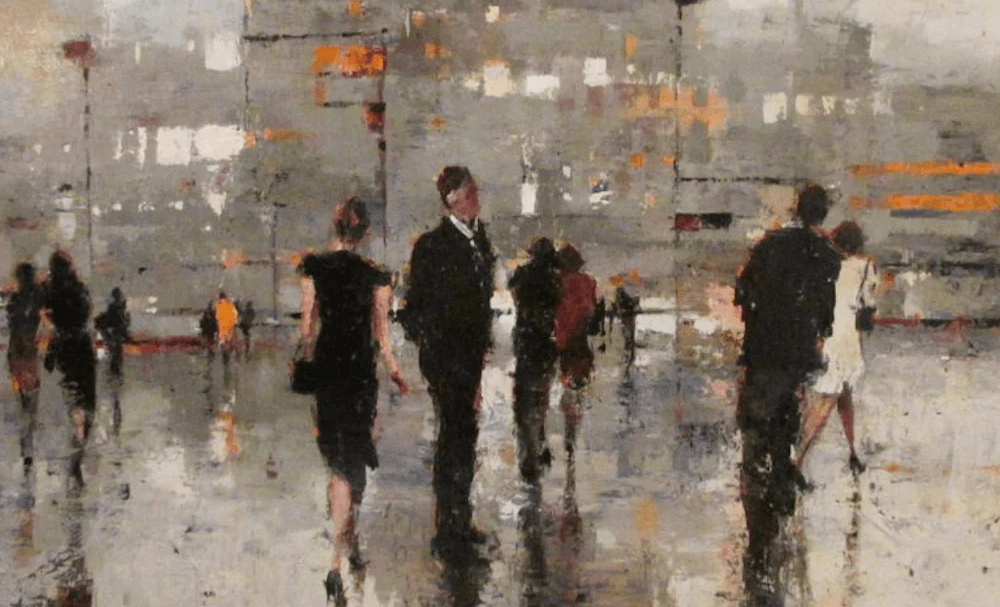
5. Art Term - Fine Art
Definition: Fine Art refers to art that is primarily made for its aesthetic and intellectual value rather than its functional or utilitarian purpose. It is often seen as the expression of the artist's vision or imagination, aiming to stimulate thoughts, emotions, and ideas in the viewer.
Characteristics:
-
Aesthetic Emphasis: The primary focus of fine art is to provide a visual or auditory experience, often prompting introspection or eliciting emotional responses from the audience.
-
Diverse Mediums: Fine art can encompass a range of mediums, including painting, sculpture, printmaking, photography, and more.
-
Limited to No Functional Use: Unlike decorative arts or applied arts (like pottery or textiles), which often serve a utilitarian purpose, fine art is usually intended for display and contemplation.
Categories within Fine Art:
-
Painting: This can range from oil, acrylic, and watercolor to frescoes and digital paintings.
-
Sculpture: Three-dimensional works that can be carved, molded, assembled, or even cast.
-
Printmaking: Techniques such as etching, engraving, and lithography used to produce artworks in multiple, often limited, editions.
-
Photography: Artistic expression through capturing images using light-sensitive materials.
-
Performance Art: Live artistic presentations, where the performer is often the artwork.
Historical Context:
The concept of "fine art" began to take shape in the Renaissance when artists and thinkers started to recognize the value of artworks beyond their religious or functional significance. As the modern era approached, art movements like Romanticism, Impressionism, and later, Modernism further solidified the idea of art for art's sake, focusing on personal expression, experimentation, and challenging conventions.
Significance in Today's World:
While the line between fine art and other forms of artistic expression can be blurry, fine art still holds a distinct place in society. Art galleries, museums, and exhibitions primarily showcase fine art, serving as spaces for reflection, discussion, and appreciation of the human creative spirit. Moreover, fine art plays a role in shaping culture, reflecting society's values, and sometimes, challenging its beliefs.

6. Storytelling
Definition: Storytelling in art refers to the conveyance of stories, narratives, or messages through visual means. While storytelling is traditionally associated with oral or written narratives, artists have been employing visual mediums to tell stories for millennia.
Characteristics:
-
Narrative Elements: Visual cues such as characters, settings, and symbolic elements come together to create a cohesive story or message within the artwork.
-
Emotional Depth: Through storytelling, artists can evoke a spectrum of emotions, ranging from joy and wonder to sadness or anger.
-
Sequence and Time: Some visual storytelling methods, like sequential art (comics or graphic novels), use a series of images to unfold a narrative over time.
Examples in Art History:
-
Ancient Cave Paintings: Some of the earliest known forms of storytelling, where scenes of hunting or rituals were depicted on cave walls, offering insights into prehistoric life and beliefs.
-
Renaissance Art: Works like Sandro Botticelli's "The Birth of Venus" or Leonardo da Vinci's "The Last Supper" not only showcase artistic prowess but tell stories from mythology and the Bible.
-
Modern Art: Pablo Picasso's "Guernica" tells the harrowing story of the bombing of the Basque town of Guernica during the Spanish Civil War, using distorted forms and monochromatic shades to convey pain and chaos.
The Power of Visual Storytelling:
Visual storytelling transcends language barriers. It can communicate complex ideas, societal critiques, or personal experiences without the need for words. Artists often use this power to shed light on social issues, share cultural tales, or delve into introspective narratives.
Contemporary Use and Significance:
In today's digital age, visual storytelling has seen a resurgence, especially with the rise of platforms like Instagram or Pinterest. Artists, illustrators, and graphic designers create compelling visual narratives that reach global audiences, making storytelling more integral to contemporary culture than ever.
Moreover, in the broader spectrum of art, storytelling remains a potent tool for artists to connect with their audience, provoke thought, and inspire change.
7. Art Term - Representational Art
Definition: Representational art, often also referred to as figurative art, seeks to depict objects, figures, or scenes in a way that is recognizable to the viewer. It presents subjects as they appear in the real world, albeit sometimes with stylistic interpretations or exaggerations.
Characteristics:
-
Recognizable Imagery: The primary feature of representational art is its ability to be immediately recognized and identified by viewers, based on its visual semblance to real-life subjects.
-
Varied Degrees of Realism: While representational art portrays real subjects, it can range from highly realistic (almost photographic) to being stylized or slightly abstracted while still maintaining recognizable features.
-
Emphasis on Technique: Many representational artworks prioritize technical skill, especially when adhering closely to realism.
Types and Examples:
-
Realism: A style that aims to depict subjects as they appear in life without idealization or romanticization. Jean-François Millet's "The Gleaners" is a fine example.
-
Photorealism: An extremely detailed form of realism that mimics the clarity and precision of a photograph, such as the works of Chuck Close.
-
Stylized Representational: Maintains the essence of the real world but adds an artist's unique twist or style. For instance, Amedeo Modigliani's elongated portraits.
Contrast with Other Forms:
-
Abstract Art: As discussed earlier, abstract art doesn't represent reality in the same direct way. Instead, it uses colors, shapes, and forms to create its message.
-
Non-Representational Art: Artworks that don't represent anything specifically from the visible world. It's about the inner qualities of the artwork itself rather than just the subject itself.
Historical and Contemporary Significance:
Throughout history, representational art has been a primary form, from ancient cave paintings to Renaissance masterpieces. It served as a means of documentation, religious reverence, and socio-political commentary.
In the modern era, with the advent of photography and the rise of abstract and conceptual art, representational art's role evolved. Today, contemporary artists might use representational forms to comment on societal issues, explore personal identities, or challenge the conventions of what representational art can convey.

8. Art Term - Plein Air Painting vs. Studio Painting
Plein Air Painting
Definition: Derived from the French term "en plein air," which means "in the open air," this style of painting involves artists creating their artwork outside, painting the scene in its natural environment.
Characteristics:
-
Direct Observation: Artists paint what they see at that very moment, making quick decisions about color, light, and composition.
-
Immediate Response: There's an immediacy to plein air painting, capturing fleeting moments like the way light changes during sunset or the shadow of a cloud moving across a landscape.
-
Natural Environment: Factors like weather, changing light, and even insects can influence the painting process.
Notable Artists:
Claude Monet, John Constable, and Camille Pissarro were all known for their plein air works.
Studio Painting
Definition: Studio painting refers to creating artwork indoors, often in an artist's studio. This method allows for a more controlled environment and extended time frame compared to plein air painting.
Characteristics:
-
Controlled Conditions: Artists can manipulate lighting, arrangement, and even work on a piece for an extended duration without worrying about changing external conditions.
-
Flexibility: Artists have the freedom to revise, rethink, and refine their work over multiple sessions.
-
Use of References: Instead of direct observation, studio artists often use drawings, photos, or memory as references.
Comparison and Significance:
While both methods have their merits, they offer different experiences and challenges:
-
Temporal Element: Plein air focuses on the present moment, while studio painting can be more reflective, spanning days, weeks, or even months.
-
Influence on Style: The urgency of plein air often leads to looser brush strokes and spontaneous decisions, whereas studio painting might involve more detailed and refined techniques.
-
Artistic Intent: Plein air captures the essence and mood of a scene, while studio painting might delve deeper into an artist's interpretation or imagination.
In the grand scope of art, both plein air and studio painting have their unique places. The choice often depends on the artist's intent, the subject, and the desired outcome.
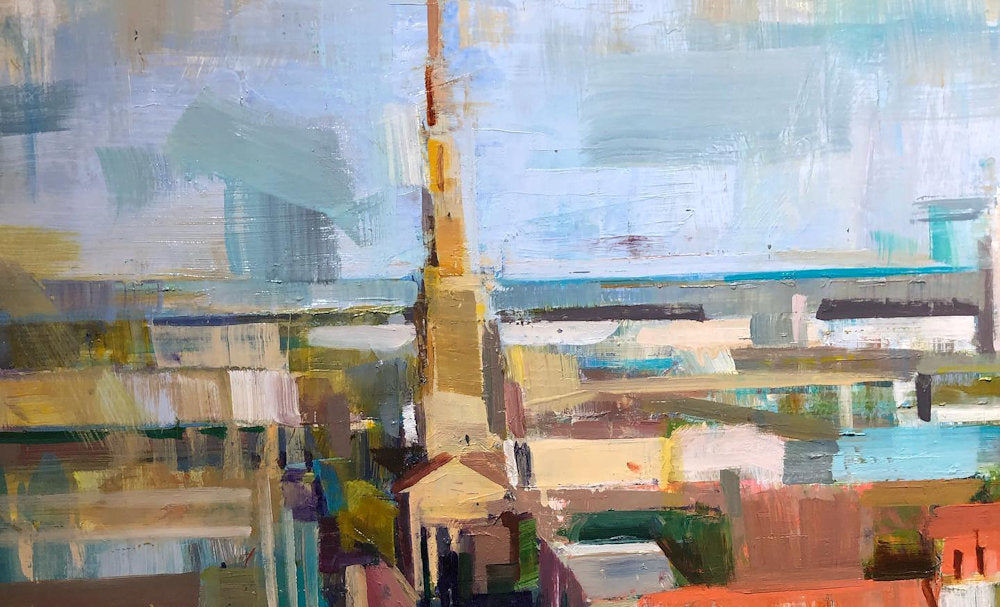
9. Art Term - Modern Art
Definition: Modern Art encompasses a wide range of artistic styles, movements, and techniques that originated in the late 19th and early 20th centuries. It marks a departure from traditional styles and explores new avenues of expression and interpretation, paving the way for the diverse world of contemporary art.
Characteristics:
-
Breaking Tradition: Modern artists moved away from realism and traditional techniques to explore abstraction, symbolism, and other non-representational methods.
-
Innovative Techniques and Materials: Use of collage, different types of paints, incorporation of non-artistic materials, and unique methods of application became more common.
-
Reflection of Modern Society: With the rise of industrialization, urbanization, and societal change, modern art often reflected the new realities, challenges, and philosophies of contemporary life.
Key Movements within Modern Art:
-
Impressionism: Focused on capturing the fleeting effects of light and color in outdoor settings. Notable artists include Claude Monet and Pierre-Auguste Renoir.
-
Cubism: Introduced by artists like Pablo Picasso and Georges Braque, it involves viewing subjects from multiple angles and reconstructing them into geometric forms.
-
Surrealism: A movement that explored dreamlike scenarios, the unconscious mind, and unexpected juxtapositions. Salvador Dalí and René Magritte are key figures in this movement.
-
Expressionism: Prioritizing emotional experience over physical reality, this movement is characterized by bold colors and distorted forms. Edvard Munch's "The Scream" is a notable example.
Impact and Legacy:
Modern art laid the groundwork for subsequent art movements and has had a profound influence on how we perceive and interpret art today. Its emphasis on personal expression, experimentation, and challenging societal norms opened doors for artists to explore diverse mediums, styles, and themes.
While sometimes controversial or challenging to traditional art norms, modern art encouraged a broader definition of what art could be. It fostered a richer global artistic dialogue.
10. Art Term - Surrealism
Definition: Surrealism is an avant-garde movement that began in the early 1920s, primarily in literature and later in art. It sought to release the creative potential of the unconscious mind by juxtaposing disparate elements. This often resulted in dreamlike, illogical scenes.
Characteristics:
-
Dreamlike Imagery: Surrealist artworks often display illogical scenes, drawing inspiration from dreams and the subconscious.
-
Unexpected Juxtapositions: Combining unrelated elements to create an element of surprise, creating new, often thought-provoking relationships between objects.
-
Automatism: Many Surrealist artists believed in bypassing the rational mind to access the subconscious, using techniques like automatic drawing or writing without conscious intent.
Key Figures and Works:
-
Salvador Dalí: Known for his meticulously detailed, dreamlike landscapes filled with strange, distorted figures. "The Persistence of Memory," with its melting clocks, is one of his most iconic works.
-
René Magritte: His works often challenge perceptions of reality. "The Treachery of Images," a painting of a pipe with the words "This is not a pipe" written in French, challenges the viewer's preconceptions.
-
Joan Miró: Employed a more abstract approach, using bold colors, geometric shapes, and symbolic forms to create whimsical landscapes.
Historical Context:
Originating as a literary movement in Paris, Surrealism was heavily influenced by the psychoanalytic works of Sigmund Freud. André Breton, a central figure in the movement, published the "Surrealist Manifesto" in 1924. He defined Surrealism as "pure psychic automatism." As the movement evolved, it expanded into various art forms, including painting, sculpture, cinema, and even photography.
Impact and Influence: Surrealism played a pivotal role in expanding the boundaries of artistic expression, encouraging artists to delve deep into their psyche and challenge the conventional boundaries of reality and art. Its influence can be seen in subsequent art movements and contemporary art forms, from pop culture to advertising, showcasing its enduring legacy in shaping modern visual culture.
11. Art Term - Conceptual Art
Definition: Conceptual Art, often simply termed "Conceptualism," is an art movement. Whereby the idea or concept behind the work takes precedence over the aesthetic, technical, and material concerns. Emerging in the 1960s, it challenged traditional notions of art by positing that the art's conceptual framework is more critical than the physical artifact.
Characteristics:
-
Dematerialization: Many conceptual artworks prioritize ideas over the physical object. In some cases, the artwork might be entirely ephemeral or intangible.
-
Documentation: Given its often immaterial nature, documentation (like photographs, maps, or written descriptions) becomes an integral part of many conceptual artworks.
-
Interactivity: Some conceptual pieces invite audience participation or interaction, emphasizing the viewer's role in completing the artwork.
Key Figures and Works:
-
Sol LeWitt: He believed in the primacy of the idea over the execution. His series of "Wall Drawings" are instructions that can be executed by anyone, making the idea behind the drawing more crucial than the drawing itself.
-
Joseph Kosuth: In "One and Three Chairs," Kosuth presents a physical chair, a photograph of that chair, and a printed definition of the word "chair," prompting viewers to contemplate the nature of representation and reality.
-
Yoko Ono: Her "Instruction Paintings" are a series of written instructions. They invite readers to imagine or perform the artwork in their minds.
Historical Context:
Conceptual Art emerged during a time of significant societal and artistic change. The 1960s and 70s saw many artists questioning the commercialization of art and the boundaries of traditional art forms. Conceptualism, with its emphasis on ideas over commodities, provided a radical alternative to the status quo.
Impact and Legacy:
While Conceptual Art was, at times, polarizing (with debates over "Is this art?" being common), it undeniably expanded the boundaries of what could be considered art. It paved the way for various contemporary art practices, emphasizing performance, interaction, and experience. Conceptualism underscored that art could exist beyond the canvas or pedestal, living purely in the realm of ideas and actions.

12. Art Term - Oil Painting
Definition: Oil painting is a technique that involves using oil-based pigments on a canvas or panel. The oils used, traditionally derived from linseed, serve as the medium to hold and apply the colored pigments. Oil painting has been a predominant artistic medium for centuries due to its versatility, durability, and rich color palette.
Characteristics:
-
Slow Drying: One of the primary attributes of oil paints is their slow drying time. This allows artists to work on a piece over multiple sessions and make changes or blend colors smoothly.
-
Texture and Layering: Oils can be layered, thinned, or thickened to create varying textures and effects, from translucent glazes to impasto techniques where paint is laid on thickly.
-
Vibrancy and Depth: Oil paints often produce colors that are richer and deeper than many other mediums.
Historical Development:
-
Early Beginnings: The origins of oil painting can be traced back to ancient times. It became a prominent medium in Western art by the 15th century.
-
Renaissance: Artists like Leonardo da Vinci, Jan van Eyck, and Titian further developed the technique. This lead to its widespread adoption and the creation of many masterpieces during the Renaissance era.
-
Baroque and Beyond: The Baroque period saw artists like Caravaggio and Rembrandt harnessing the medium's potential. They created dramatic contrasts and chiaroscuro effects.
Notable Artists and Works:
-
Vincent van Gogh: His bold use of paint and brushwork in pieces like "Starry Night" showcase the potential of oils.
-
Pablo Picasso: Although known for many mediums and styles, Picasso's oil paintings like "Les Demoiselles d'Avignon" marked pivotal moments in art history.
-
Georgia O'Keeffe: Her large-scale, zoomed-in depictions of flowers and landscapes in oil paint transformed the still life genre.
Significance in the Art World:
Oil painting has been instrumental in the evolution of visual art. It allows for realistic depictions, experimental techniques, and varied artistic expressions. Its influence can be seen in almost every art movement, from Renaissance and Baroque to Impressionism and Abstract Expressionism. While new mediums have emerged, oil painting remains a revered technique, continuing to inspire contemporary artists today.
The captivating realm of art, with its myriad styles, techniques, and expressions, offers a profound glimpse into human creativity and emotion. Yet, truly immersing oneself in this world often requires understanding the above art terms as it can be a unique language.
We hope that this guide has shed light on the essential terms that define and shape artistic dialogue. Whether you find yourself in the hushed corridors of a historic museum or engaged in lively discussions in a modern gallery, may this newfound knowledge deepen your appreciation and connection to the ever-evolving tapestry of art. Remember, art is a journey, and every term you learn adds another layer to your experience.


